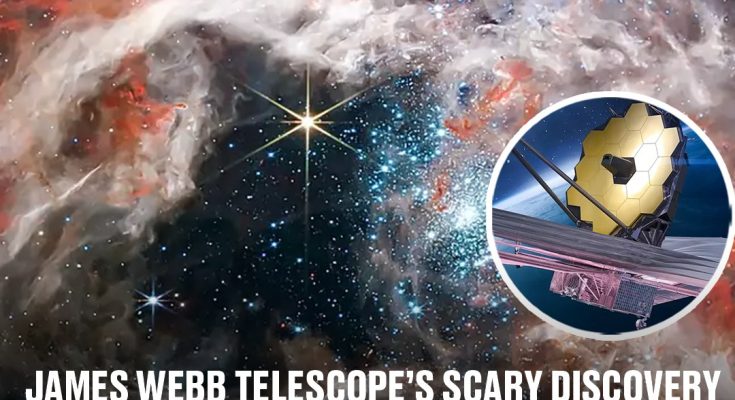A discovery has been made which has the ability to change everything that we know about the universe.
That’s right, and it’s all because of The James Webb Space Telescope (JWST).
If you don’t know what it is, the JWST is a more advanced version of the legendary 1990 Hubble telescope, which was launched into space in December 2021.
Living up to its expectations, the JWST has made numerous discovers in space, which could even point to there being life beyond our small planet.
It also went on to find that potential planets could be forming right before our eyes after discs and dust gathered around two stars.
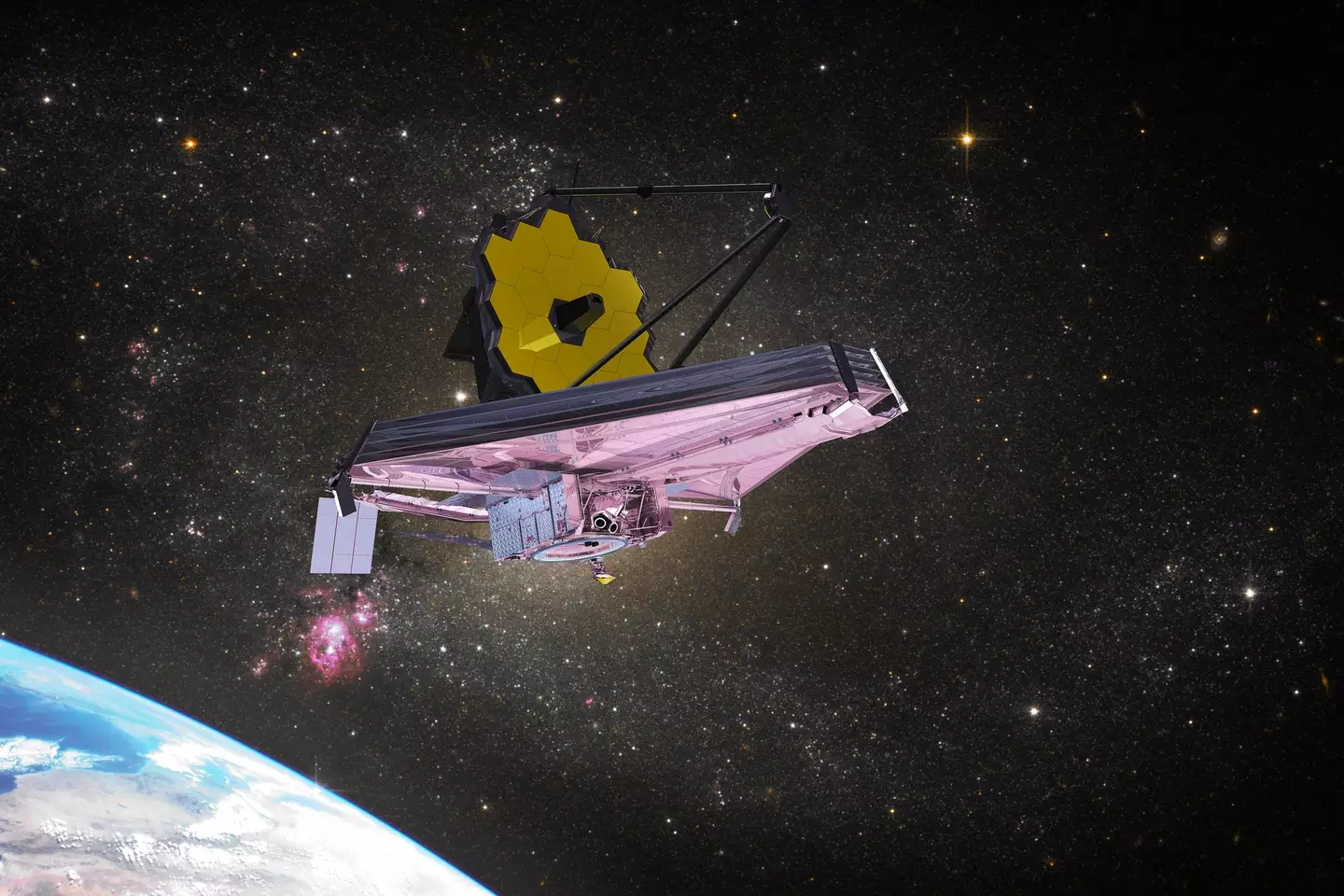
The James Webb Space Telescope has made a shocking discovery (Getty Stock Image)
The telescope has captured so many high resolution images of galaxies, as well as stars being formed and even early stage black holes (which is more scary than it is cool).
But it’s JWST also made a shocking discovery, which one physicist has called a ‘crisis’ in the way we understand the universe.
Astronomers have used the information from both the Hubble and James Webb Space Telescopes to confirm one of the problems in physics that still baffles them.
What is the Hubble Tension?
The issue they need help with is that scientists have arrived at different estimates of the rate of the universe’s expansion.
This is called the Hubble Tension, and could potentially upend the world of cosmology for good.

Have we misunderstood the universe? (Getty Stock Image)
How do we know how fast the universe is expanding?
There are two ways to figure out the Hubble constant – a value that describes the universe’s expansion rate.
The first way is basically through the Big Bang’s leftovers, which are tiny fluctuations in the cosmic microwave background.
From 2009 to 2013, astronomers figured out that this figure was roughly 46,200 mph per million light years, or about 67 kilometres per second per megaparsec (km/s/sMpc).
The second way is to use pulsating stars, also known as Cepheid variables.
Astronomers use the outer layers of dying stars, which flicker like broken street lights in the distance.
By measuring its brightness, these Cepheid stars can be chained into a ‘cosmic distance ladder’, which allows us to look further into the past of the universe.
Using this, an exact number can be pinpointed that reveals the speed of the universe’s expansion.
Estimates of the universe’s rate of expansion contradict each other
By using the second method, Adam Riess – professor of physics and astronomy at Johns Hopkins University – and his colleagues estimated that the universe’s expansion rate is actually about 74 km/s/Mpc, a value much higher than the previously thought 67 km/s/Mpc.
This could make the universe 10 percent younger than we originally thought.
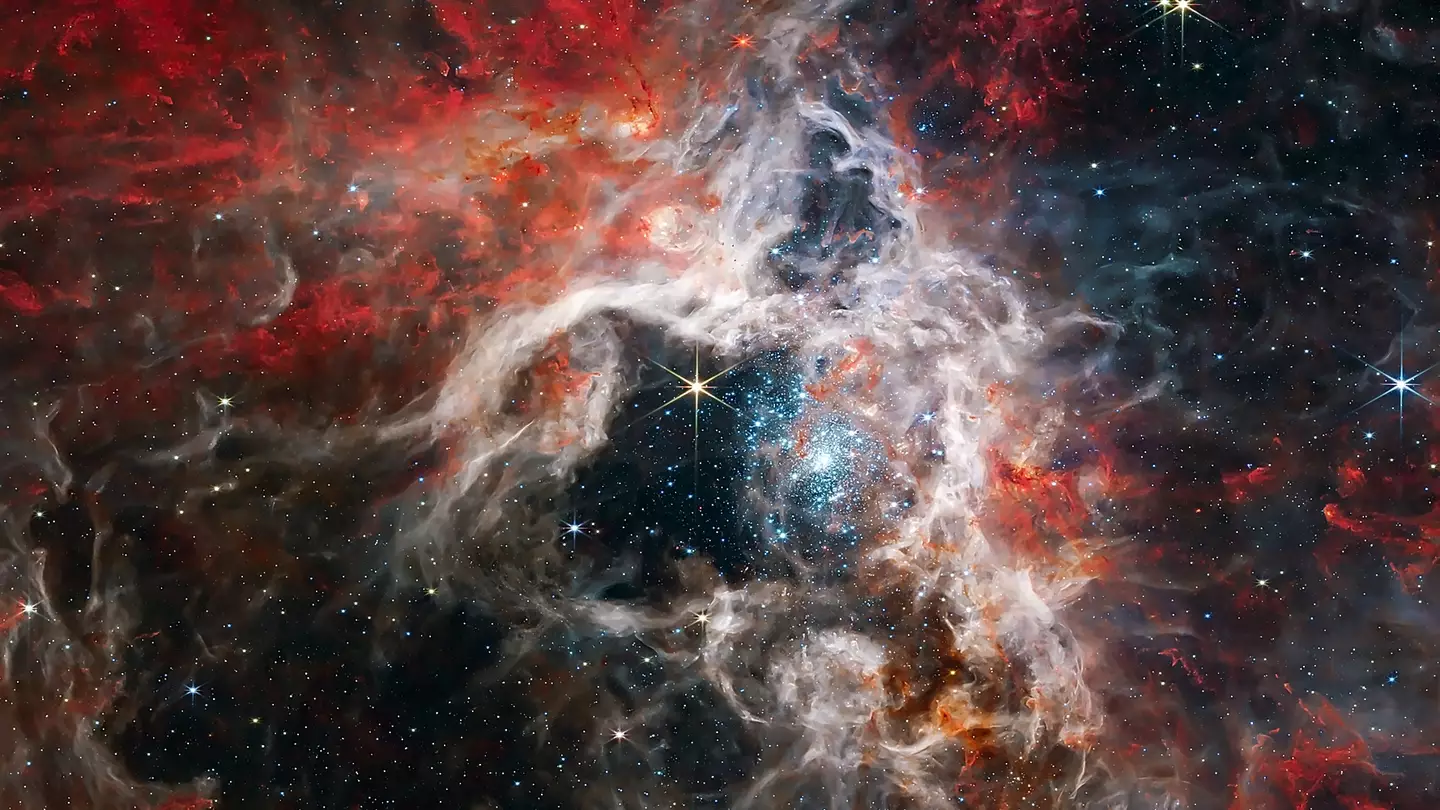
Scientists have called it a ‘crisis’ (Getty Stock Image)
The world of cosmology has been catapulted into uncertainty following this discovery.
Nobel Prize winning astronomer David Gross called it a ‘crisis’ at a 2019 conference.
What did the James Webb Space Telescope find?
Initially, the discovery was thought to be a measurement error by confusing Cepheid stars with regular stars in the Hubble’s lens, but the much more accurate JWST disproved these claims, confirming the new discovery.
On 6 February, a study was published in the Astrophysical Journal Letters, highlighting that our understanding of the universe could be very, very wrong.
Lead study author Riess stated: “With measurement errors negated, what remains is the real and exciting possibility we have misunderstood the universe.”
Riess observed 1,000 other Cepheid stars in five separate galaxies as far away as 130 million lightyears from Earth, further confirming their findings on the Hubble constant.
He explained: “We’ve now spanned the whole range of what Hubble observed, and we can rule out a measurement error as the cause of the Hubble Tension with very high confidence.
“Combining Webb and Hubble gives us the best of both worlds. We find that the Hubble measurements remain reliable as we climb farther along the cosmic distance ladder.”
Featured Image Credit: Getty Stock Photos
Topics: News, Science, Space, James Webb Space Telescope
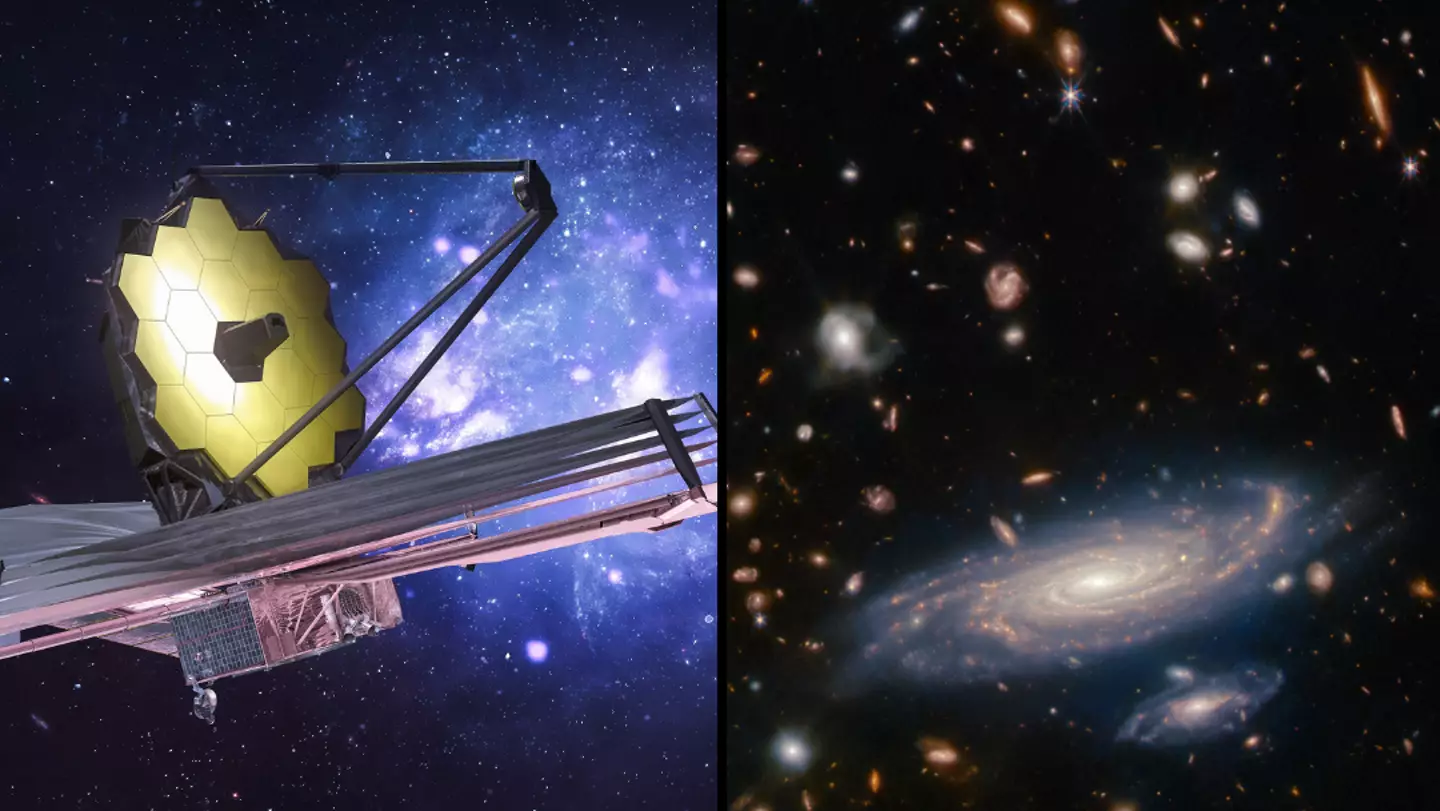
The hi-tech telescope being used by NASA has made an ‘astonishing discovery’ according to one of the leading astrophysicists in the world.
Dubbed the James Webb Space Telescope (JWST), it was launched in to space back in December 2021, and in the two and a bit years since, the telescope has already made some remarkable discoveries about the cosmos.
Some of what it has found has even proved longstanding scientific theories ‘seriously wrong’.
Our obsession with space goes back to the 1960s when the first man was launched in to orbit, followed by the iconic 1969 Moon Landing.
The launch of the JWST means we can now see light from right after the the Big Bang, as well as the first stars to ever be formed across the entire universe.
A successor to the legendary Hubble Space Telescope, its opening up a whole new world of discovery for the scientific community.
And it just keeps on giving following one new discovery surrounding black holes.
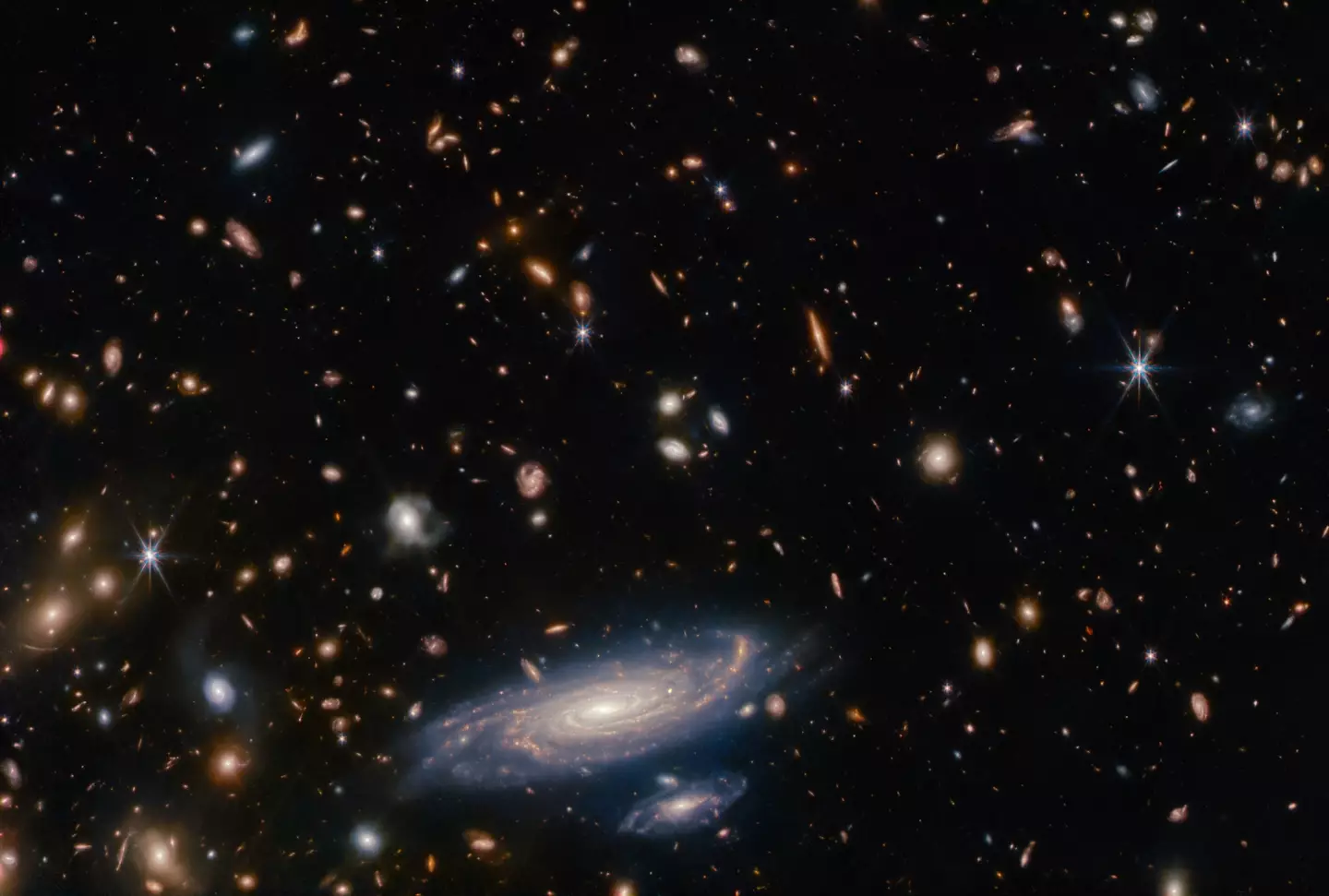
ESA/Webb, NASA and CSA, A. Martel
A go to for those who like to dabble in very amateur astronomy reading, black holes are areas of such immense gravity that nothing, not even light, can escape from it. Their standing within the scientific field has seen them the focus of many sci-fi shows and films, with one of the more recent being Interstellar.
Now, a critical piece of the puzzle when it comes to understanding the early days of the universe has been discovered thanks to the JWST.
The telescope has a number of ‘eyes’ that can detect infrared signalling. And now they have found a small bunch of red dots that have been identified as some of the earliest galaxies ever formed.
And in a major development, academics say it now serves as a huge clue to unlocking the secrets of how galaxies and black holes started out.
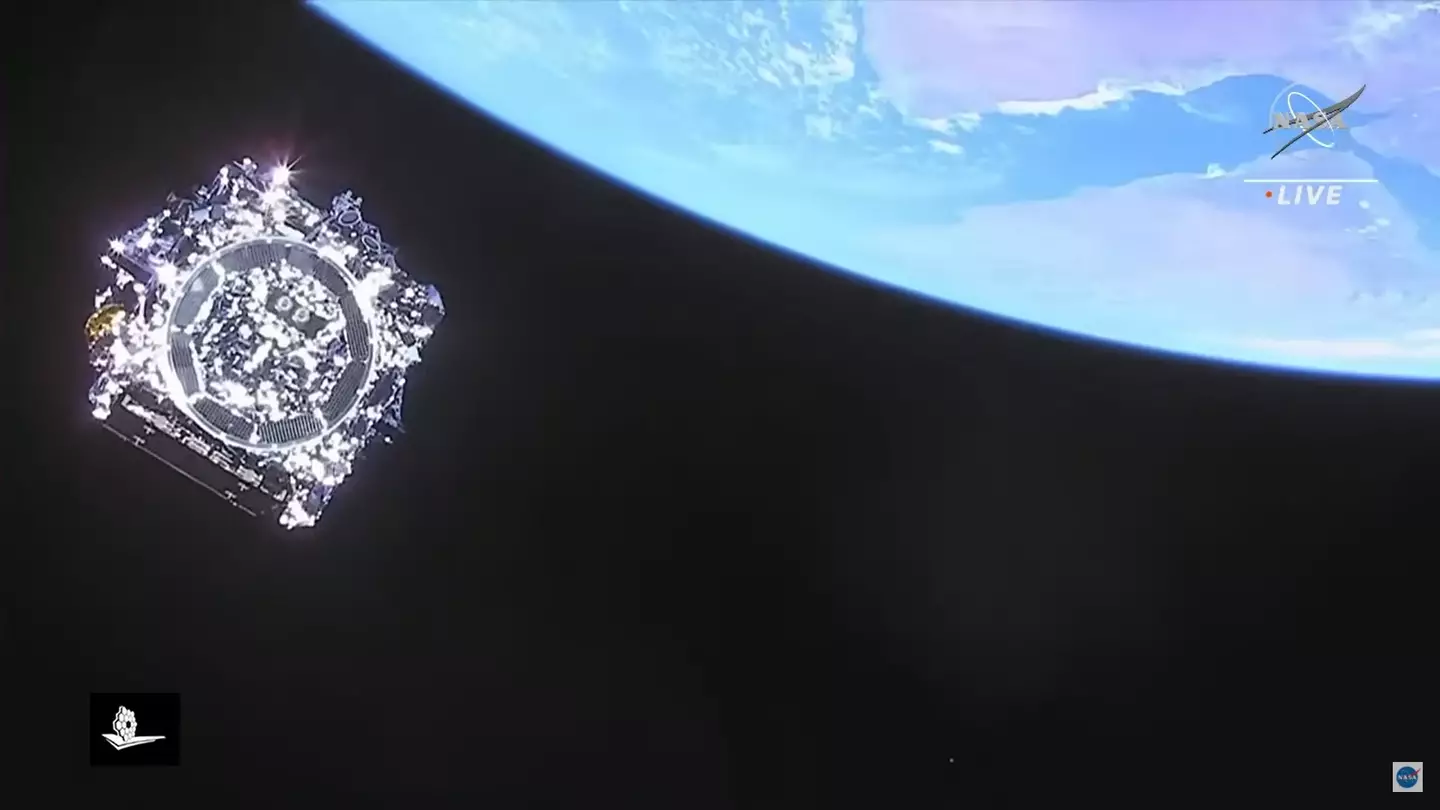
Arianespace, ESA, NASA, CSA, CNES
JILA Fellow and University of Colorado Boulder astrophysics professor, Mitch Begelman, said: “The astonishing discovery from James Webb is that not only does the universe have these very compact and infrared bright objects, but they’re probably regions where huge black holes already exist.
“That was thought to be impossible.”
The work of Begelman and a team of fellow astronomers was published in The Astrophysical Journal Letters.
Explaining the traditional concept of how black holes are formed, Begelman said: “The idea was that you went from this early generation of stars to the galaxies really becoming mainly dominated by stars. Then, towards the end of this process, you start building these black holes.”
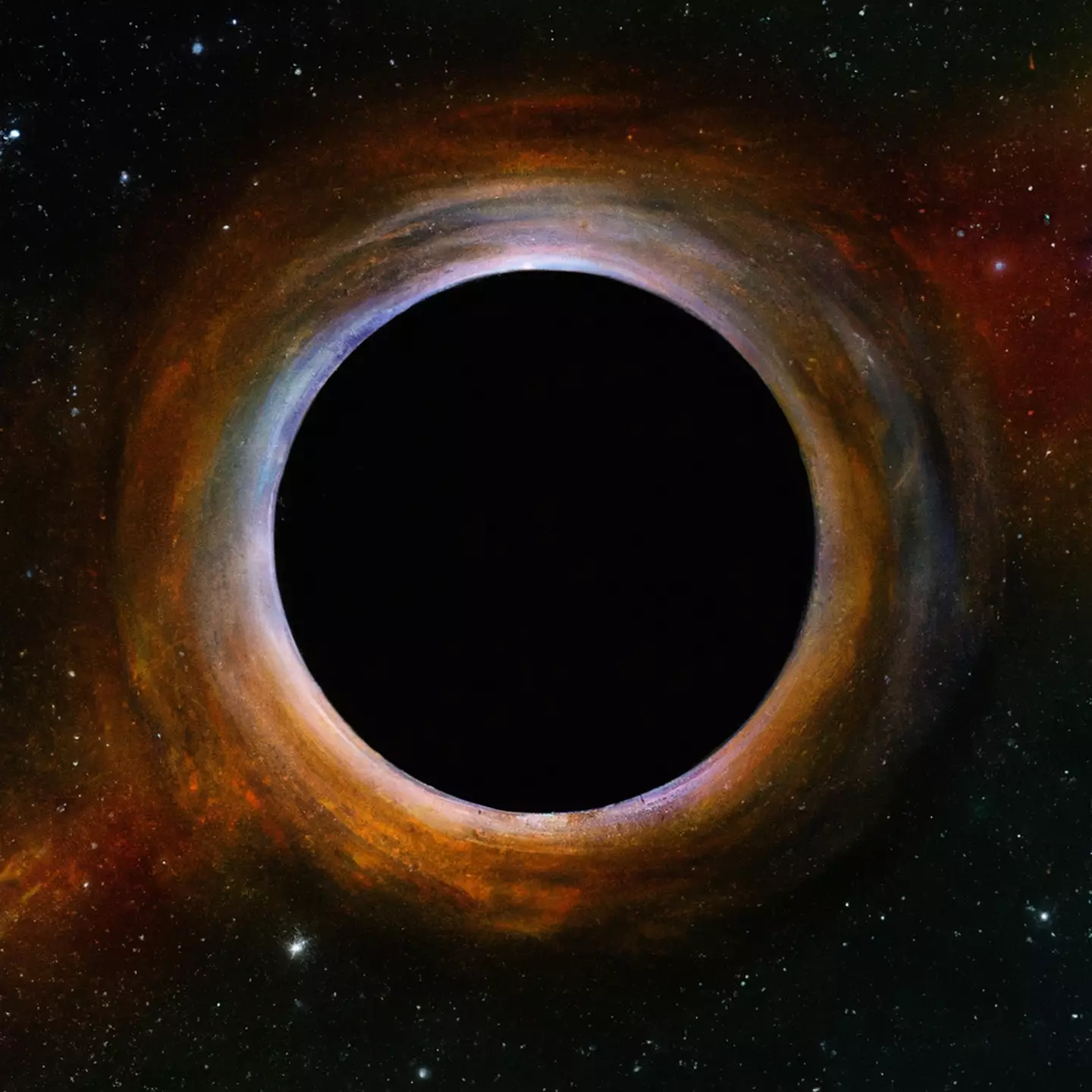
Getty Stock Images
These black holes that are studied are commonly thought to be collapsed stars that has no more fuel to burn.
But the red dots found by JWST indicate the first galaxies and their stars co-existed with black holes.
“[This new data] looks like [the process is] reversed, that these black holes formed along with the first stars, and then the rest of the galaxy followed,” says Begelman.
“We’re saying that the growth of the black hole, at first, promotes the stars. And only later, when conditions change, does it flip into a mode of turning off the stars.”
The theory is now to be studied within the scientific community with modelling essential for others to put their backing behind it.
Featured Image Credit: Getty Stock Images / NASA / ESA / Webb / CSA, A. Martel
Topics: Science, Space, Technology, US News, World News, James Webb Space Telescope
.png)
To anyone but an astronomer, trying to understand how space works can leave you feeling a little sore-headed.
But Professor Brian Cox is on hand to explain how one of the world’s most advanced pieces of kit helps us ‘travel through time‘.
It comes after a huge discovery by the same equipment that could change how we think about the universe.
We’re on about the James Webb Space Telescope (JWST) that was first launched in to space in December 2021.
Its purpose? To operate as a more advanced version of the legendary Hubble telescope, which was launched 34 years ago in 1990.
In one of the more recent updates, the revolutionary piece of equipment has been used to confirm a long-lasting problem in astronomy.
The issue is that the universe has appeared to be expanding at varying speeds, depending on where we choose to look. This is called the Hubble tension, and could potentially upend the world of cosmology for good.
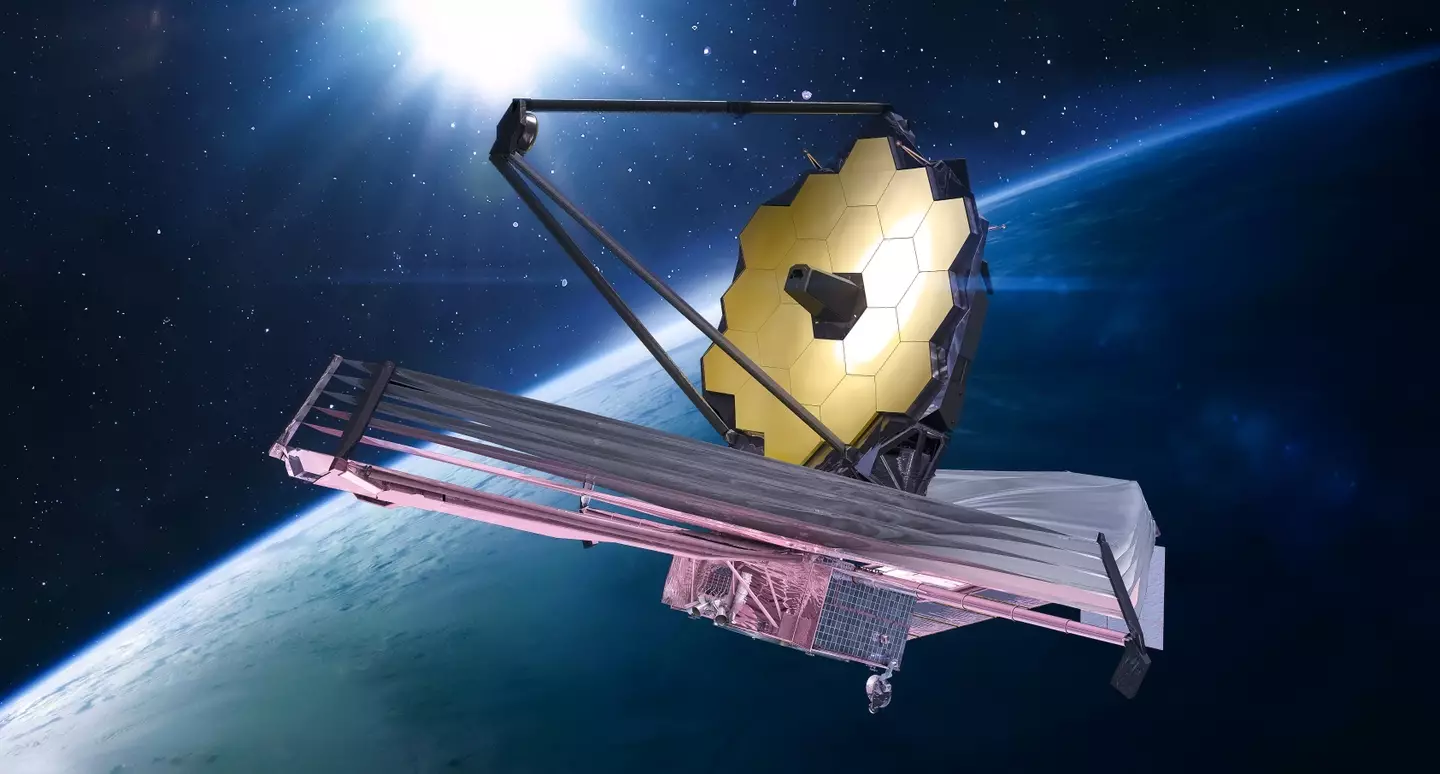
Getty Stock Image
And in 2023, JWST data confirmed the initial measurements carried out by Hubble in 2019, solidifying the theory.
Professor Brian Cox has explained exactly how the JWST and Hubble work, looking out in to deep space.
Light travels really slowly in terms of space, moving at 186,000 miles a second. One way you might have heard this contextualised is that it takes eight minutes for light to get from the Sun to Earth.
So basically, the further out in to space we look, the ‘older’ the light we’re observing through the JWST or Hubble is. In effect, we’re travelling through time to analyse light from billions of years ago.
And for Professor Cox, there’s other tech that could be massive in observing light from the Big Bang itself.
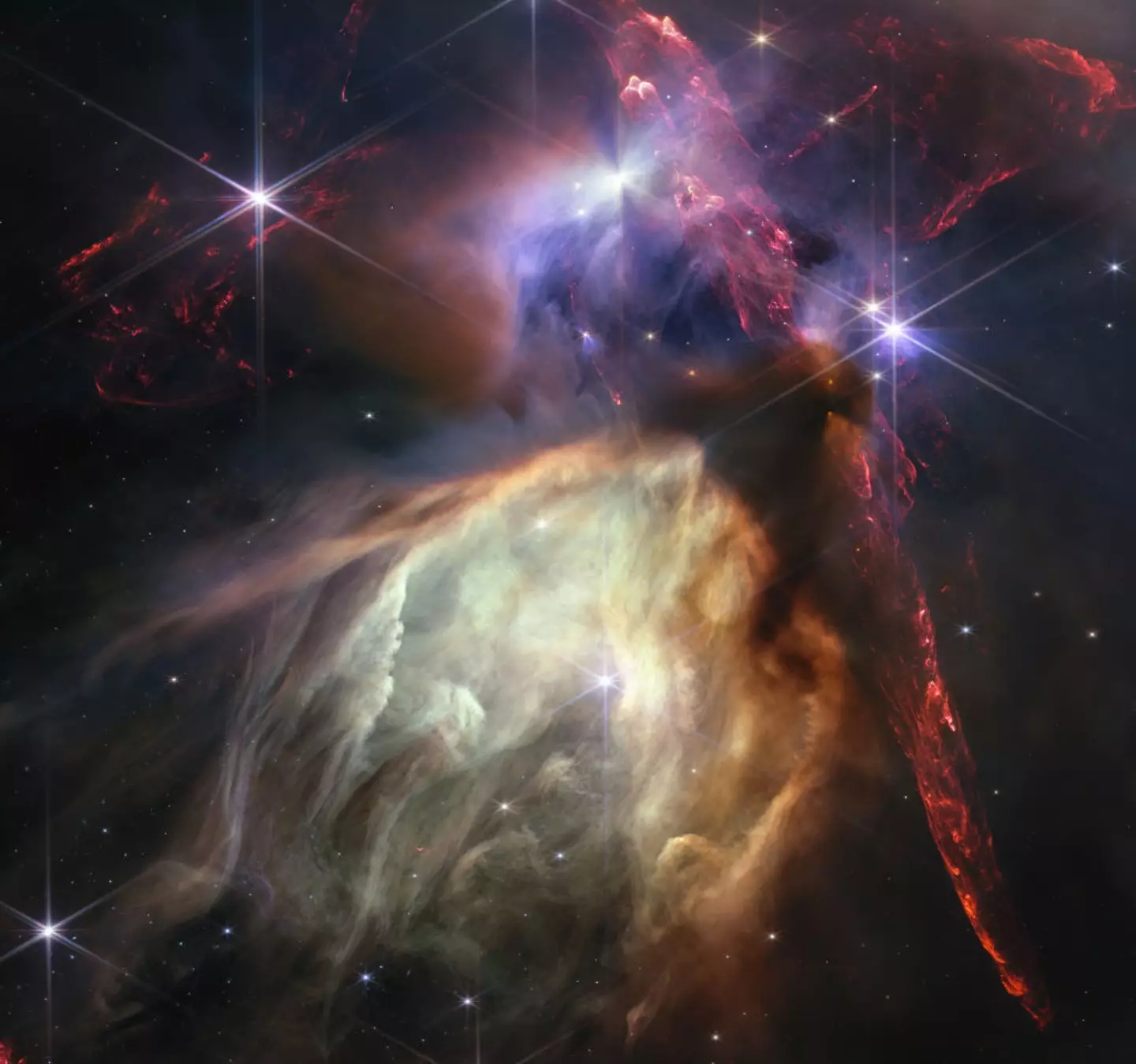
NASA, ESA, CSA, and STScI via Getty Images
Professor Cox said: “The Webb looks so far out that it’s capturing light that’s been travelling for over 13 billion years but the universe has been expanding and so the light has been stretching.
“And so for the most distant galaxies we’re looking back back in time almost to the Big Bang.”
He added: “The Webb can see the formation of the first galaxies. It’s essentially looking all the way back, very close to the beginning of time. And that’s very important.
“Because we’re not entirely sure exactly how those first galaxies formed.
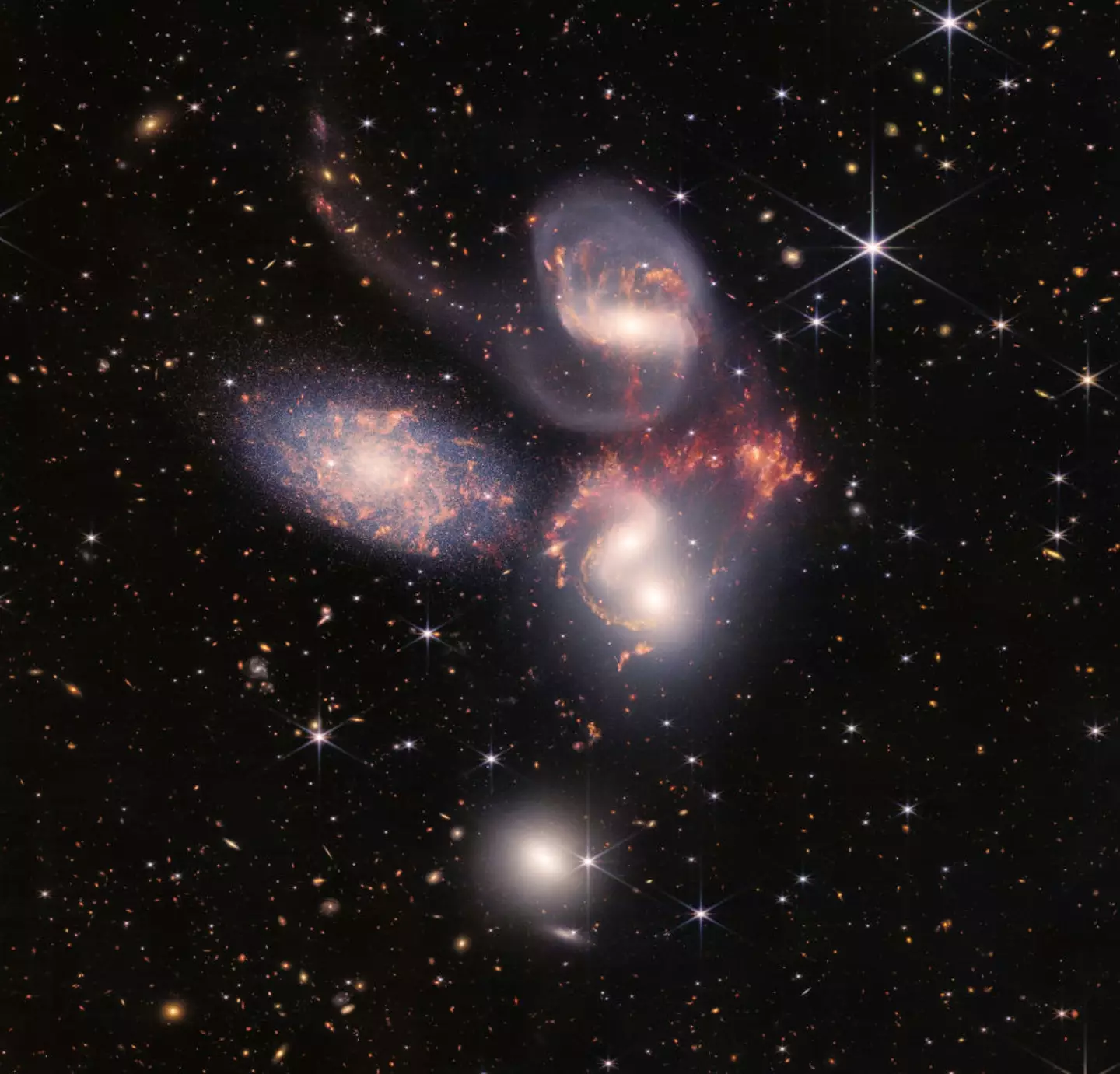
NASA, ESA, CSA, and STScI via Getty Images
“So we can see that. It is microwaves. Because it’s been stretched so much by the expansion of the universe. Going back, the problem with light is that in those earliest times the universe was so hot and so dense that light couldn’t travel through it. It was opaque.
“So you can’t use light to go back earlier than that but what we can potential do – not yet, we’re not good enough yet – but the technology we use now to detect colliding black holes… that technology possible could allow us to probe right back to this thing, the Big Bang.”
Featured Image Credit: Jonathan Nicholson/NurPhoto via Getty Images/NASA, ESA, CSA, and STScI via Getty Images
Topics: Brian Cox, News, Science, Space, Technology, Weird, World News, James Webb Space Telescope
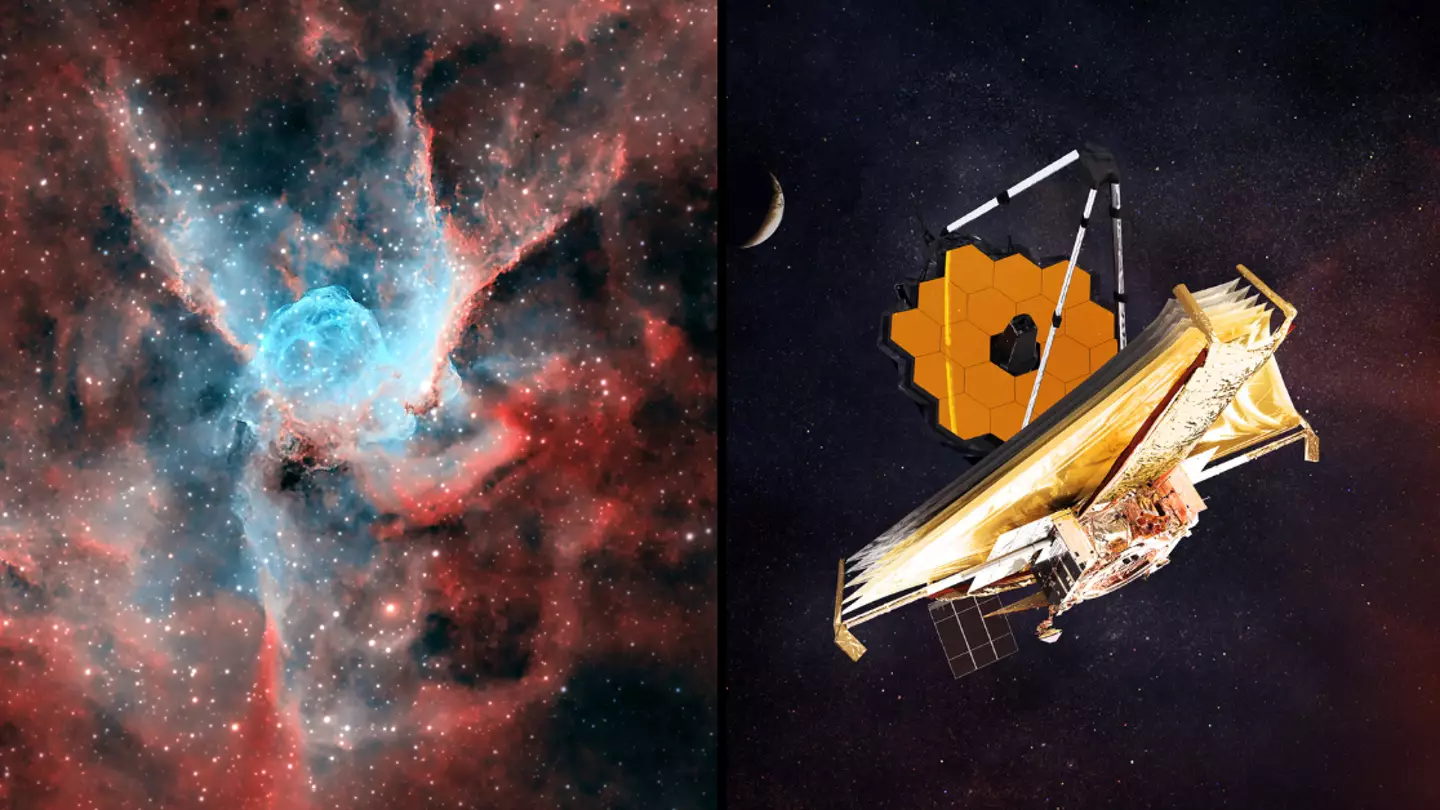
Some of the world’s leading astronomers have been left ‘really surprised’ after discovering something new about the early days of the universe.
Using NASA’s James Webb Space Telescope (JWST), which cost a staggering $10 billion (£8.05 billion), the international team came across the discovery using JWST’s Near-InfraRed Camera (NIRCam).
The NIRCam allows us to look at images from deep space that we simply couldn’t comprehend with our own eyes and will be essential to NASA’s attempts to find alien life on other planets.
The research, which was published today (24 April), studied the formation of the universe’s early galaxies with the JWST essentially allowing us to look back in time.
Previously, the Hubble Space Telescope let NASA and scientists look back in time to the formation of galaxies up to nine billion years ago.
But through the JWST and its increased sensitivity and wavelength range, we’re talking even further back in time.
Led by astronomers from Durham University in the north east of England, they used Webb to look for something called bar formation when the universe was just a few billion years old. It might sound old but in the grand scheme is still the pretty early days, with the universe around 13.7 billion years old today.
In cosmos speak, bars are elongated strips of stars across the universe. It’s similar to disc or spiral galaxies such as our very own Milky Way.
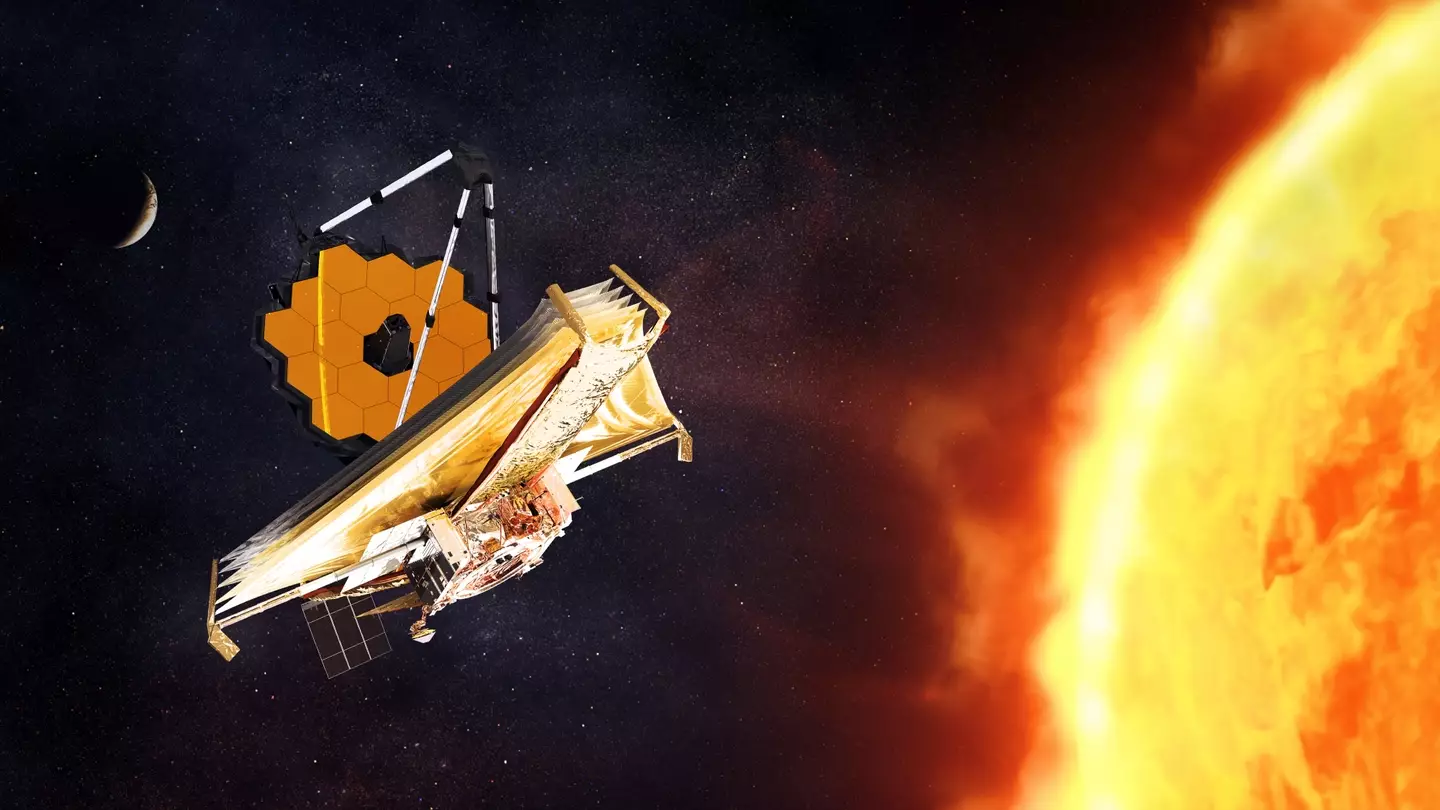
CGI of the James Webb Space Telescope (Getty Stock Images)
As these strips of stars mature, they then regulate star formation within a galaxy, pushing gas into its central area.
Their presence also tells astronomers that galaxies have entered a more settled, mature phase rather than the more violent nature of their early days.
But the findings from Webb mean that scientific theory about the early days of the universe might have to be re-thought after looking back at the formation of galaxies between eight and 11.5 billion years ago.
The latest research is published in the journal Monthly Notices of the Royal Astronomical Society.
Lead author is Zoe Le Conte; a PhD researcher in the Centre for Extragalactic Astronomy within the Department of Physics at Durham University.

The universe is a very large and old place (Getty Stock Images)
Le Conte said: “Galaxies in the early universe are maturing much faster than we thought.
“This is a real surprise because you would expect the universe at that stage to be very turbulent with lots of collisions between galaxies and a lot of gas that hasn’t yet transformed into stars.
“However, thanks to the James Webb Space Telescope we are seeing a lot of these bars much earlier in the life of the Universe which means that galaxies were at a more settled stage in their evolution than previously thought.
“This means we will have to adjust our views on early galaxy evolution.”
Of 368 disc galaxies observed, the researchers saw that almost 20 percent had bars (strips of stars). This is twice as many than observed by Hubble.
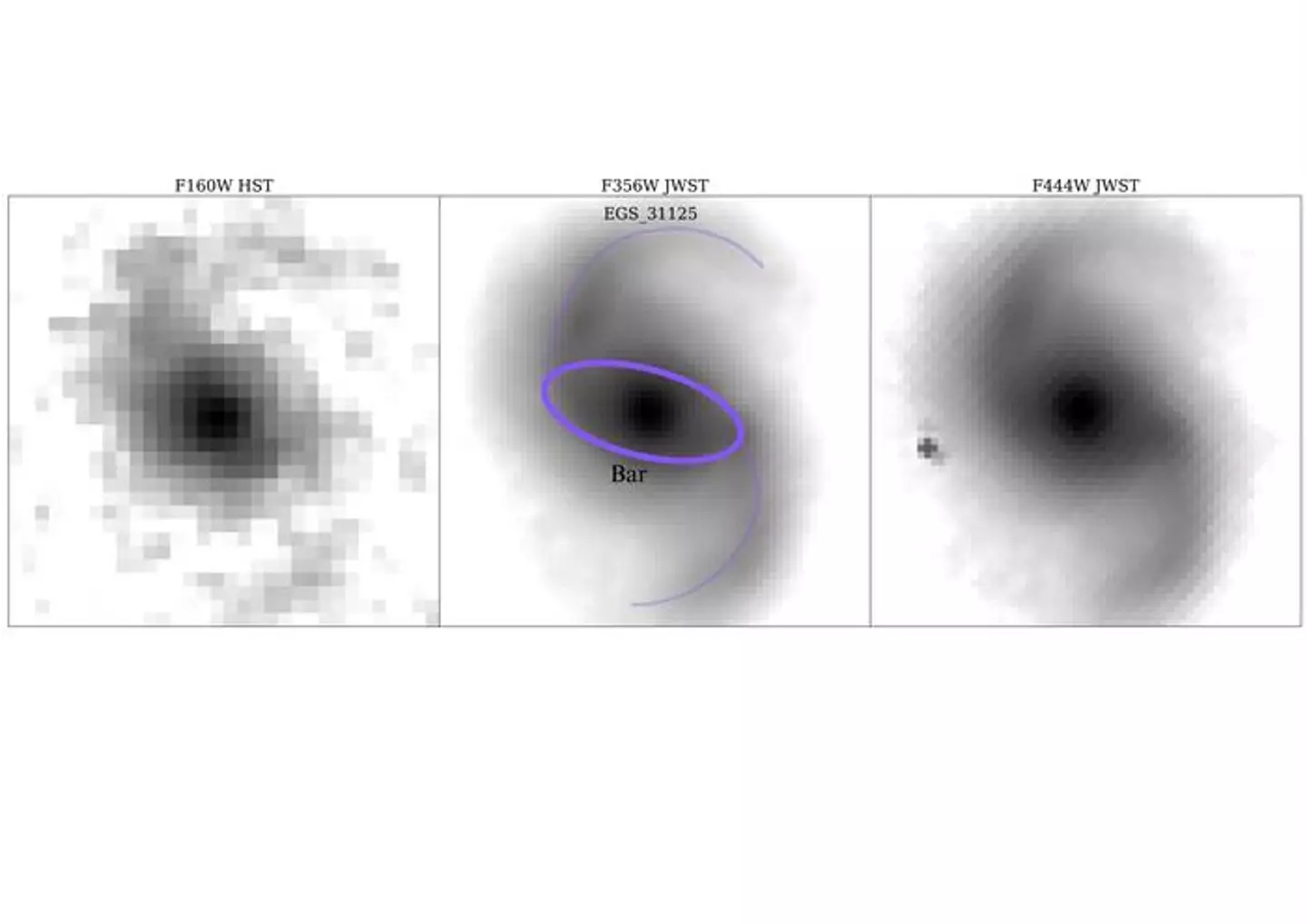
Grey-scale image of a galaxy from 10.6 billion years ago showing thick bars, which are strips of stars (Zoe Le Conte)
Co-author Dr Dimitri Gadotti, from the Centre for Extragalactic Astronomy within the Department of Physics at Durham University, said the discovery was ‘very exciting’.
“The simulations of the Universe now need to be scrutinised to see if we get the same results as the observations we’ve made with James Webb,” Dr Gadotti said.
“We have to think outside of what we thought we knew.”
All eyes are now on looking even further back in time – some 12.2 billion years – to see if the findings here support or counter the new concept.
Featured Image Credit: Getty Stock Images
Topics: Education, James Webb Space Telescope, Space, Technology, UK News, World News, Science

NASA’s leading instrument to discover the hidden wonders of the universe could be about to re-write history as we know it after a startling discovery from the beginning of the universe.
We are of course talking about the James Webb Space Telescope (JWST), a $10 billion (£8 billion) piece of kit that has revolutionised remote space exploration for almost two years.
Put together alongside the European Space Agency (ESA) and the Canadian Space Agency (CSA), the JWST was shot into space on Christmas Day 2021, sending its first pictures back to Earth in July the next year.
Now, the telescope has found one of the essential ingredients to life shortly after the Big Bang itself some 13.8 billion years ago.
That’s because the JWST acts as a real-life time machine, taking images from deep in space with these pictures at huge distances away from what is being captured by its Near Infrared Camera (NIRCam).
And because of how light travels, when looking at objects that are far away, we see them not as they are but as they were.
The same would be said of alien life looking at Earth – they wouldn’t see us now but Earth a long, long time ago depending on how many light years away from our planet they are.

The James Webb Space Telescope has made a remarkable discovery (NASA/Getty Stock Images)
The lastest discovery by Webb is a massive cloud of carbon in a distant galaxy that came about just 350 million years after the start of the universe.
That might sound like a long time after the Big Bang – because it is – but it tells us something that might make scientists have to have a rather large re-think.
A paper on the discovery, published in scientific journal Astronomy & Astrophysics, hints at what we might now have to reassess.
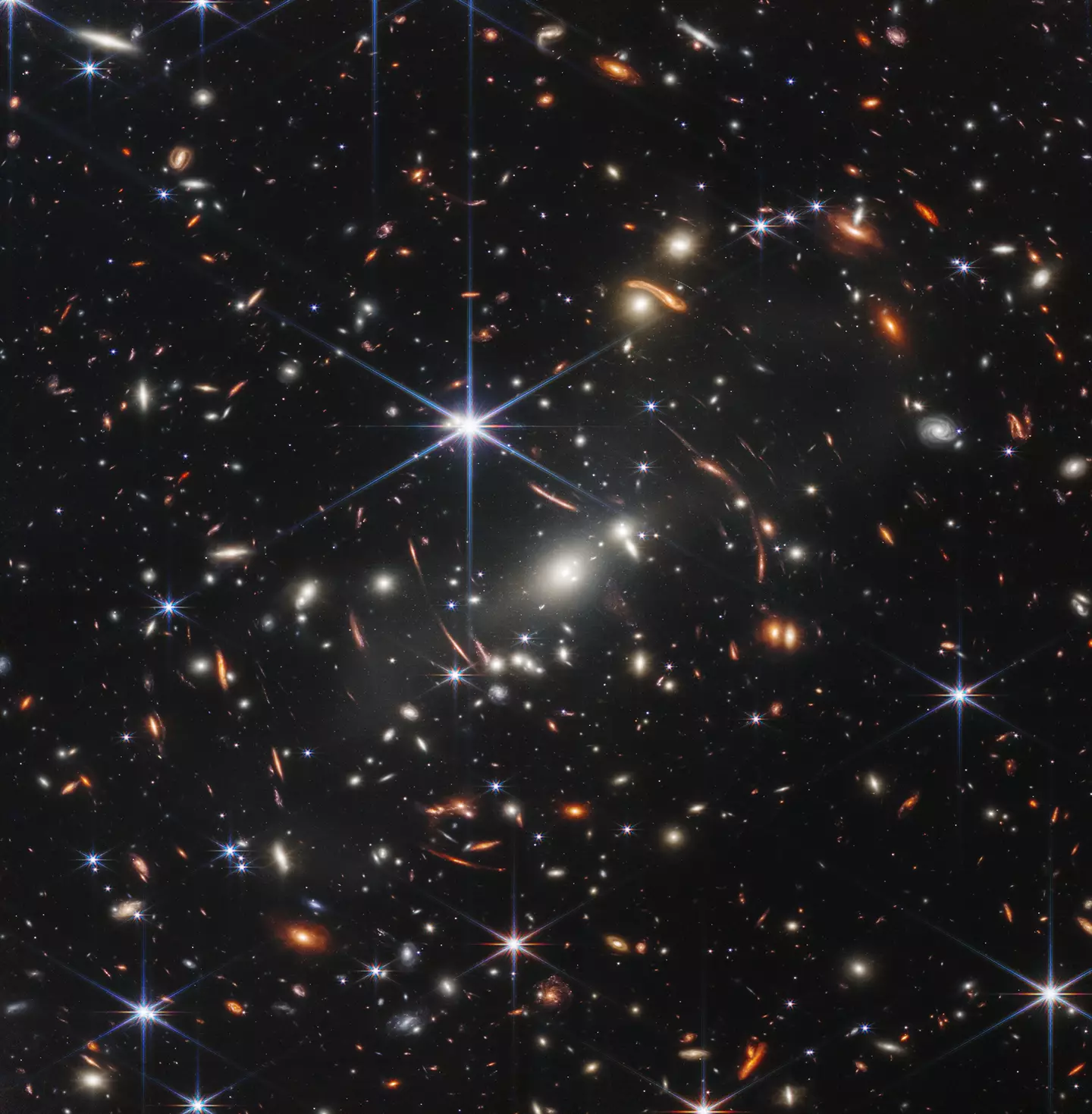
An amazing image of deep space captured by the JWST (NASA, ESA, CSA, STScI)
Roberto Maiolino, co-author of the paper and professor of experimental astrophysics at the Kavli Institute for Cosmology at the University of Cambridge, said in a statement: “Earlier research suggested that carbon started to form in large quantities relatively late—about one billion years after the Big Bang.
“But we’ve found that carbon formed much earlier—it might even be the oldest metal of all.”
Lead author Dr. Francesco D’Eugenio, from the Kavli Institute for Cosmology at Cambridge, told Forbes that it was the first confirmed detection of a chemical element outside of the earliest known elements produced by the Big Bang itself.
And given that the Big Bang only created hydrogen, helium and lithium, the carbon has to have been made inside stars.
He said: “The very first stars are the holy grail of chemical evolution. Since they are made only of primordial elements, they behave very differently to modern stars.
“By studying how and when the first metals formed inside stars, we can set a time frame for the earliest steps on the path that led to the formation of life.”
D’Eugenio added: “Because carbon is fundamental to life as we know it, it’s not necessarily true that life must have evolved much later in the universe.
“Perhaps life emerged much earlier — although if there’s life elsewhere in the universe, it might have evolved very differently than it did here on Earth.”
Featured Image Credit: NASA, ESA, CSA, STScI / Chris Gunn / NASA via Getty Images
Topics: James Webb Space Telescope, Space, Technology, Science, NASA, US News, World News
